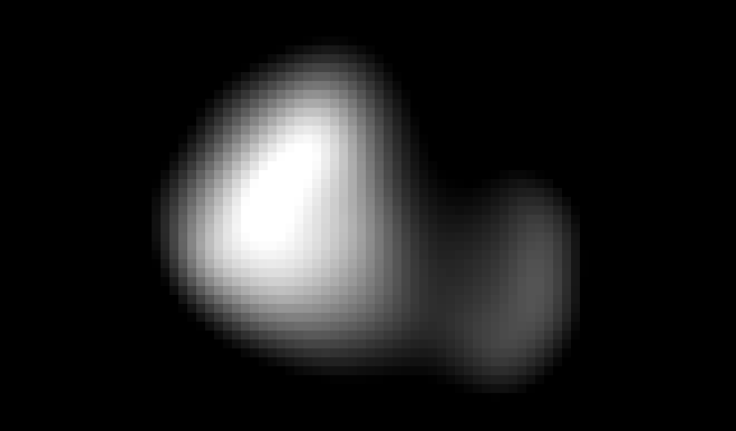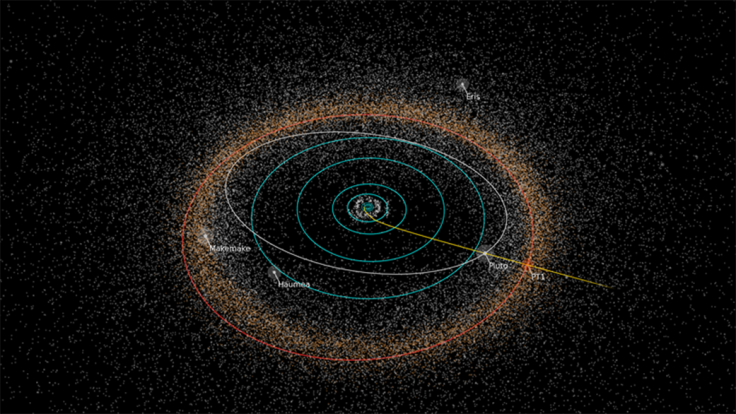NASA New Horizons Update: Pluto's Family Photo Is Complete With Kerberos Image, First Maneuvers To Next Target

NASA's New Horizons mission, launched in 2006, is far from over. Since making its close approach of Pluto in July, the spacecraft has been delivering fascinating photos of the dwarf planet and its moon. On Thursday, New Horizons fired its thrusters in its first maneuver to its next target 1 billion miles from Pluto.
As New Horizons travels to Kuiper Belt object 2014 MU69, the spacecraft is beaming back a valuable trove of data. The latest images from New Horizons, released Thursday, finally put Kerberos in view. The tiny moon was discovered in 2011, followed by the Styx moon, discovered in 2012. Pluto's three other moons, Charon, Nix and Hydra, are much larger than Styx and Kerberos.

Kerberos appears to be a double-lobed object covered in ice, according to NASA. With ice mountains, hearts, geological activity and vast chasms, Pluto and its moons have excited researchers with the unexpected. Kerberos continues the trend as astronomers predicted the moon would be larger due to its gravitational pull on the other moons. "Once again, the Pluto system has surprised us," Hal Weaver, New Horizons project scientist from Johns Hopkins University Applied Physics Laboratory, said in a statement.
After zooming by Pluto, New Horizons is headed to 2014 MU69. The object, discovered by the Hubble Space Telescope in 2014, is much smaller than Pluto. Measuring slightly under 30 miles wide, MU69 is still 10 times larger than a normal comet with a mass 1,000 times that of the icy objects. The KBO is an ancient, frozen remnant from the time when the solar system formed, which makes it a perfect object for study. "The detailed images and other data that New Horizons could obtain from a KBO flyby will revolutionize our understanding of the Kuiper Belt and KBOs," John Spencer, New Horizons science team member, said in a statement after MU69 was picked as New Horizons' next target in August.

The maneuver started at 1:50 p.m. EDT Thursday, with the New Horizons team receiving data confirming its success at 8:30 p.m. EDT. Three more maneuvers will be performed to put New Horizons on track to fly by MU69 in 2019. The next maneuver takes place Saturday.
© Copyright IBTimes 2025. All rights reserved.





















